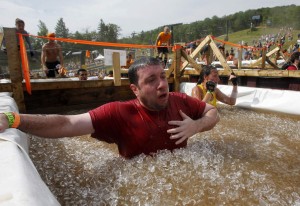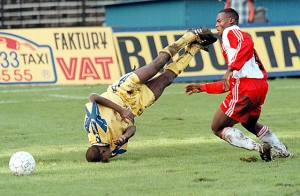So I haven’t put up a post in awhile but I’m going to try to make a habit of it every week. A lot of times it’s difficult for me to think up a topic that would benefit the readers of this page in terms of training. It’s like “what would you like to know?” or “how can I make a complex training concept more easy to understand?”
What I’ve realized is, that’s not the case. Maybe you don’t know what you’d like to know. Maybe something you thought you weren’t interested in or didn’t have any significance to you will become extremely significant. Or maybe I don’t have to oversimplify every training concept because you enjoy the science behind it.
Such is the case with training, the more we learn makes us wonder how much we actually knew beforehand.
Godzilla
Let me start off by saying that the new Godzilla movie is friggin’ AWESOME! I don’t know about you but I’ve been waiting for this movie ever since the release of the last one in 1998. That’s about 16 years, but who’s keeping track? (I am).
This new Godzilla is more like the original Japanese one with an American twist, not to mention he’s the biggest one ever. This was pretty special so my friends and I splurged for D-Box seats on opening night.
For those of you who don’t know, D-Box seats shake when shiz goes down, so you can imagine how awesome it was during a movie about giant monsters destroying a city. I cranked it up to max and at some points it was like I was doing the Harlem shake. So worth it.
Tough Mudder
Although I keep trying to convince myself otherwise, I have already registered for Tough Mudder in August with the CTS family. I’ve run a smaller obstacle race in the past which was alright despite the lack of training for it (I pretty much winged it), but I’m not sure taking a stab at an 18km run uphill without training is the greatest plan.
My current training goals don’t really align with the average long distance runner but there are some things I can focus on to help me finish the race on a good note:
Quality of Movement
Quality of movement means proper alignment of the joints and spine, mobility of the surrounding tissues, and the ability to control the joints through the required range of motion. This means being serious about your soft tissue and mobility work, and training all planes of core stability.
Movement quality is of utmost importance, especially during a race, if you want to decrease the chance of injury. Sure, one step isn`t so bad, but how many do you take over the course of a race? Thousands? And in a fatigued state no less. Upper body movement quality is crucial as well, as you’ll be performing all sorts of climbing and pulling movements.
Performance wise, energy leaks are a no-no. Ensuring the quality of your movement will make sure most of your energy is going towards propelling you forward in your stride and upwards over walls, not struggling to keep your body in the correct positions.
In your lower body soft tissue work for your hip flexors, glutes, hamstrings, and IT band are a must, along with the calves and the bottoms of the feet. You’ll also need hip stability and adequate range of motion in your hips, knees, and ankles. In the upper body we need to make sure the spine is aligned and you have proper setting and control of the scapula.
Here’s a sample mobility and activation series which can be used as a warm up or on off days:
- Foam Roll
- T-Spine Extension – Rotation x 8 ea. side
- Y wall touches x 8
- Wall hip flexor mobilization x 15s ea. Leg
- Supine glute bridge x 8
- Side lying clam x 8 ea. Side
- Plank and side plank x 2x10s ea.
- Wall ankle mobilization x 5 ea. direction
Strength
Strength plays a huge role in these races. The stronger you are, the less energy you expend with each step and exert on each obstacle. In other words strong = good. The big basics such as squats, deadlifts, single leg variations, chin ups, rows, and push ups should make up the base of your training. Getting strong in these movements has great carryover to your performance in the race and will put some muscle on your frame.
For your main lift of the day work in the 3-5 rep range for 4-5 sets. This range will allow intensity great enough to illicit some serious strength gains.
Body Composition
In the world of sport, relative strength (being strong in relation to your bodyweight) reigns supreme. Better relative strength means you’ll be able to control your body with ease. You’ll run faster and jump higher. Cool huh? Body composition is especially important in obstacles which require you to climb or hang, and these races are chock full of them.
Increasing muscle mass and shedding fat mass will improve your relative strength so cleaning up your diet is crucial to getting in shape and fueling your performance.
Follow these guidelines as the base of your diet:
- 1 serving of lean protein with every meal (1 palm size for women, 2 for men)
- 1-2 fistfuls of starchy carbs post workout. Try to limit them in other meals.
- 1-2 thumbs of healthy fats per meal (mixed nuts, avocados, olive oil, etc.)
- 2 fistfuls of green veggies with every meal.
- A big glass of water with every meal.
From this baseline you can alter it based on your body type, energy requirements, etc. Don’t overcomplicate it though.
Reactive Ability
The unique ability of your tendons to store elastic energy can be exploited for performance. Training reactive ability with the use of plyometric drills will allow you to better make use of the elastic energy stored in your tendons while running, therefore covering more distance. More energy produced through passive structures such as the tendons will also lower the amount of energy needed from active tissues such as the muscles of the leg. Less energy expended actively by your muscles means greater running efficiency and a better overall race.
You don’t need to get crazy with the plyo drills and start jumping off of cars and stuff like you see on the Youtube – just add them into your warm ups.
A good starting point is to add some hops and bounding into your warm up after your mobility work and prior to your strength work. You want to be fresh when you do these and they will also serve as a bit of a nervous system wake up.
Example:
- Hops in place 2×8
- Bounding 2x30m
Remember to spend as little time on the ground as possible upon contact.
Aerobic Capacity
As you’re already aware, running long distances requires a good aerobic system. Where it becomes complicated in these races is not the distance, but the ability to recover after the obstacles. Your body should be able to recover energy substrates after completing an obstacle, while you run, along with clearing out waste products such as lactate.
Strength circuits consisting of basic movements are a great way to train this capacity. The heavy strength training movements simulate the more anaerobic requirements of the race and the circuit fashion simulates the requirements of the aerobic system. Maintaining performance throughout the duration of the workout is key and should be monitored.
Choose 3-4 large movements and create a small circuit. A good way to organize them is to alternate upper and lower body movements or push and pull movements.
Example:
1a. Goblet squat x 8-10
1b. Push up x 8-10
1c. DB Romanian Deadlift x 8-10
1d. Inverted Row x 8-10
Rest 45-60s in between rounds. Repeat 4-6 times.
So there ya go! Hopefully you can use these concepts in your training…..before it’s too late. Time for me to go out and enjoy the weather. Until next time!



1 Response to "Godzilla and Tough Mudder"
[…] Supreme Strength 2.0 | Beyond Strength Performance, LLCDo Speed Deadlifts Really Work?Towel Training for a Stronger Grip » Blog Archive » Gaglione StrengthCatalyst Training Systems | Making the world a stronger place | Godzilla and Tough Mudder – Catalyst… […]